|
Bucks Geology GroupThe Whitchurch Sand Formation
The Whitchurch Sand Formation can be found capping the small hills between Aylesbury and Oxford. These strata represent the earliest Cretaceous sediments to be preserved in Buckinghamshire. The Whitchurch Sand Formation has few fossils preserved, however non-marine bivalves and gastropods have been found that have been used to date the sediments as Valanginian in age (140-134Ma) and equivalent to the Wealden Group in the Wessex basin.Much of the Early Cretaceous is missing in Bucks. This is the result of a long period of erosion when Bucks became emergent from the sea as a land area. The Whitchurch Sand is dominated by fine to medium grained quartz rich sand. It varies in colour from white, yellow, orange to brown depending upon the amount of iron staining. Most places the sands are unconsolidated but in places irragular masses of sandy ironstone or siliceous concretions are found (see photo of 'bowel-stones' in the Hartwell Park wall below). The Whitchurch Sands can also show cross-laminations and channelling which has been interpreted to be of alluvial origins.
The Whitchurch Sand Formation Stratigraphy
At Bill, the Whitchurch Sand has been recorded as upto 18m thick. The lower section was silty with clay beds, while the upper section was mainly ferruginous sandstone with ironstones. The more cemented lithologies have been used in many of the older buildings, walls and rockeries and give the village it's distinct character. In the 1830's a fossil tree 12m long was discovered. The account by Thomas Knight in the Provincial Medical Journal- August 1842, gives the account 'On the top of Brill Hill, thick beds of a bright yellow of ochre also exist. On removing a thick bed of it a short time ago, a fine trunk of a fossil tree was exposed, and laid bare the whole length of the pit; its surface was completely covered with metal firmly attached, and though for a time it retained its silvery appearance hardness, till oxygen of the air in a few weeks its frail nature, and resolved it into green crystals of sulphate of iron. The bed of green sand underneath this curiosity had great quantities of pyritic formations, in the shape of irregular balls weighing several ounces.'
Photographs of the Whitchurch Sand FormationHover cursor over photograph for label.
Rocks and Fossils from the Whitchurch Sand Formation
The Whitchurch Sandstone..
Further reading suggestions: Catt, J. 2010. Hertfordshire Geology and Landscape. HNHS. Horton, A. 1995. Geology of the country around Thame. BGS memoir to geological map sheet 237. Morris, A.A. 1867. On the ferruginous sands of Buckinghamshire. Geological Magazine, Vol.4, 456-105. Sumbler, M.G. 1996. British Regional Geology - London and the Thames Valley. BGS. HMSO.
|
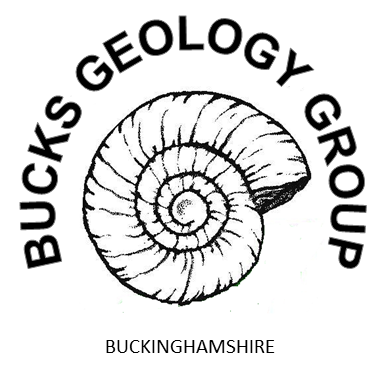
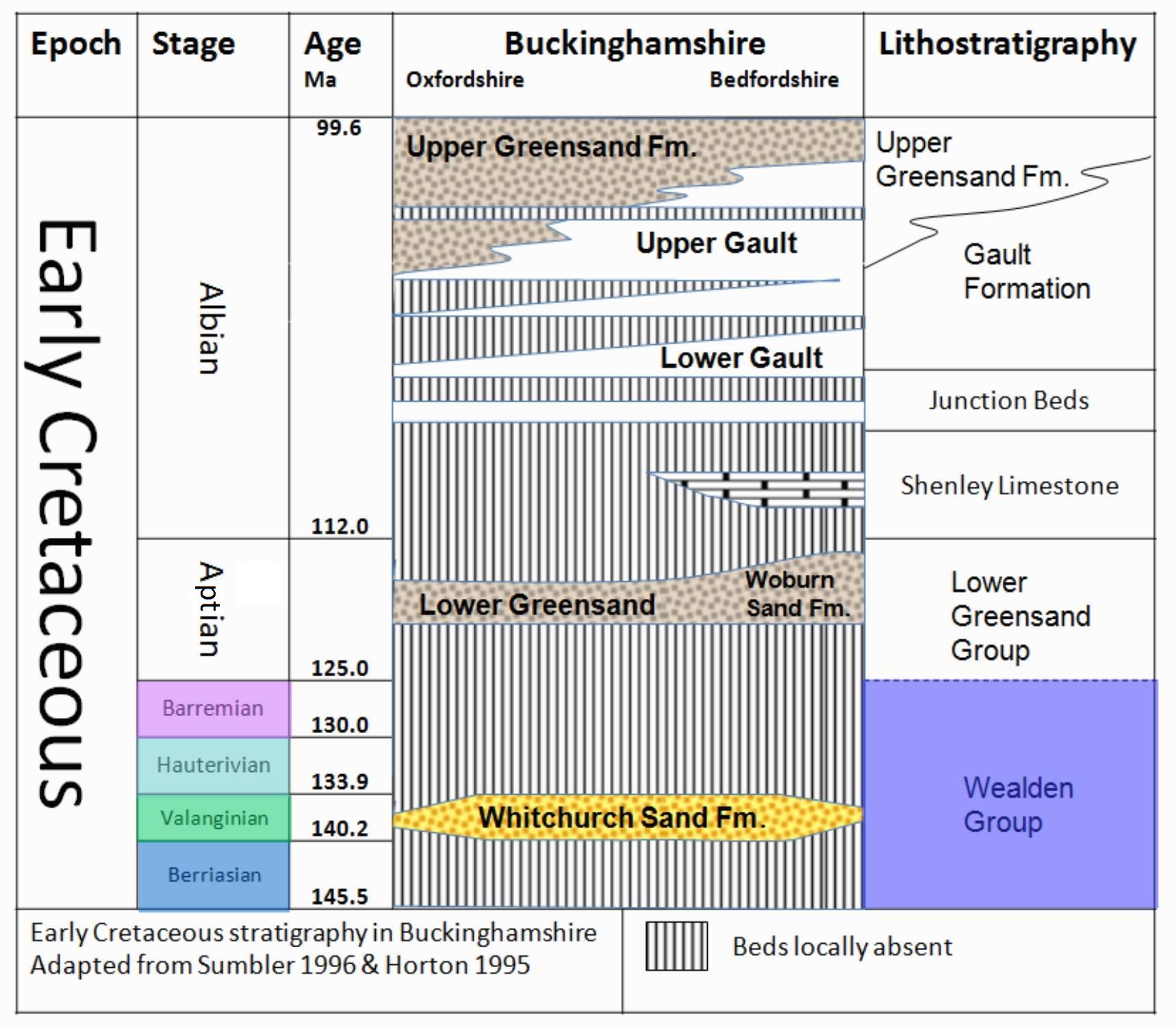
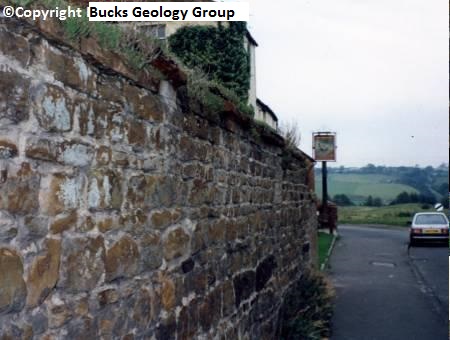
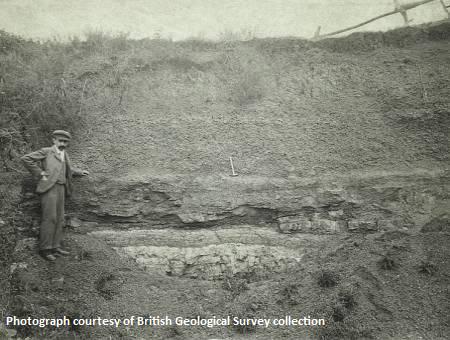

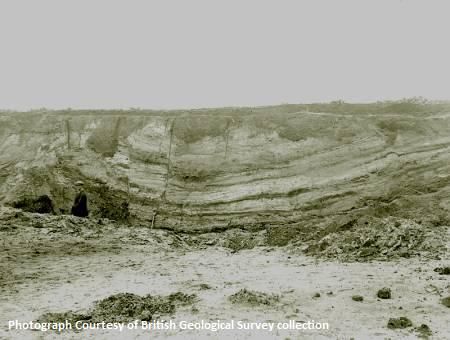
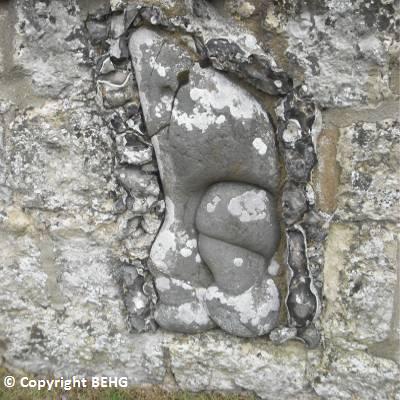 Whitchurch Sand. Siliceous concretions built into the Hartwell Park walls. From a nearby 'white sand-pit' Morris describes the section in 1867 as follows: in descending order, of coarse ferruginous sand, sandy clay, fuller's earth., shaley clay and grey sand, large lenticular, but not continuous, masses of pisolitic hydrated oxide of iron, reposing on an uneven surface of white sand, containing large irregular hard siliceous concretions, assuming very grotesque forms called 'bowel-stones', this sand is about 20 feet thick.'
Whitchurch Sand. Siliceous concretions built into the Hartwell Park walls. From a nearby 'white sand-pit' Morris describes the section in 1867 as follows: in descending order, of coarse ferruginous sand, sandy clay, fuller's earth., shaley clay and grey sand, large lenticular, but not continuous, masses of pisolitic hydrated oxide of iron, reposing on an uneven surface of white sand, containing large irregular hard siliceous concretions, assuming very grotesque forms called 'bowel-stones', this sand is about 20 feet thick.'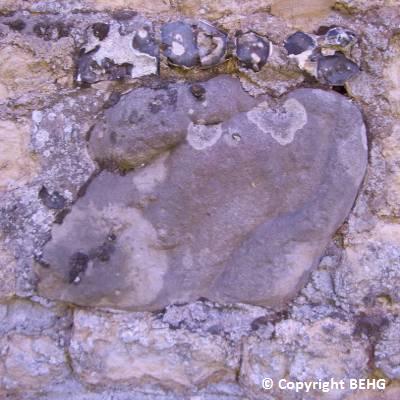 Whitchurch Sand. Siliceous concretion from the lower part of the Whitchurch Sand Fm. built into the Hartwell Park walls.
Whitchurch Sand. Siliceous concretion from the lower part of the Whitchurch Sand Fm. built into the Hartwell Park walls.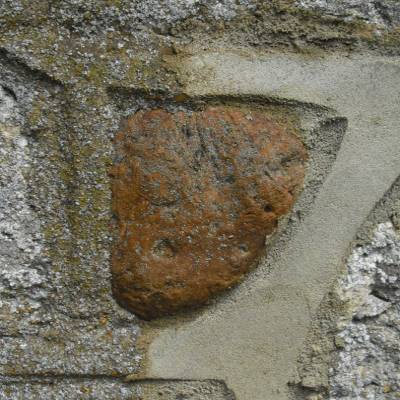 Whitchurch Sand 3 Whitchurch Sand 3.
Whitchurch Sand 3 Whitchurch Sand 3. Whitchurch Sand 4. Whitchurch Sand 4.
Whitchurch Sand 4. Whitchurch Sand 4. Whitchurch Sand 5. Whitchurch Sand 5.
Whitchurch Sand 5. Whitchurch Sand 5. Whitchurch Sand 6. Whitchurch Sand 6.
Whitchurch Sand 6. Whitchurch Sand 6.